
Employee advocacy is the blue-eyed baby companies want. Employees have long been known to be the best brand advocates and this has been leveraged often. When new employees receive branded stationery, travel mugs, or backpacks, it’s not just thoughtful; these items can turn indifferent employees into walking advertisements. Additionally, when employees attend business events to improve their skills, they promote brand awareness through every interaction.
Imagine them praising your brand. That is the best employee advocacy to hope for. When people share positive thoughts about their employers, listeners know they are sincere. It’s the strongest endorsement you could receive, carrying significant weight.
This awareness has made employee advocacy highly sought after. However, many still don’t fully understand what employee advocacy is – it’s much more than just handing out branded merchandise.
This guide on employee advocacy will be a lengthy and enjoyable read if you have 6-10 minutes to spare. To jump to sections that interest you, follow the links below:
- What is Employee Advocacy?
- Why is Employee Advocacy Important?
- Steps to Build a Successful Employee Advocacy Program
- How Employee Advocacy Integrates with Broader Communication Strategies?
- What are The Advantages of Having an Employee Advocacy Mobile App?
- Leveraging Newsletters for Employee Advocacy
- Common Employee Advocacy Mistakes to Avoid
- How to measure the success of Your Employee Advocacy Program?
- How Can Companies Choose the Best Employee Advocacy Platform?
What is Employee Advocacy?
Employee Advocacy is a strategic program that drives employees to promote a brand or organization that they work for. It’s a highly effective program that encourages employees to voice their love, excitement and enthusiasm for the brand they work for by spreading the word about their company.
For example, a Facebook post saying, “Such a fun Friday at work! Bring your pets to work days are the best,” illustrates employee advocacy. Similarly, a tweet like, “Great lunch at work today! We’re hiring—check us out if you’re looking for an awesome workplace,” also reflects this concept. Sharing company blog posts on LinkedIn counts as employee advocacy as well.
An employee advocate is someone who promotes a brand by:
- Creating a positive brand image and raising awareness about it.
- A trustworthy spokesperson for the brand, an expert on its products/services, and recommends them to friends and family.
- Spreads the word about job opportunities and helps find the best relevant talent to close them.
- Showcasing genuine enthusiasm for the brand and sharing information about the company, products, or services.
While informal sharing is valuable, we are particularly excited about structured programs that encourage employees to share curated brand content in an organized, measurable, and sustainable manner. For employee advocacy to succeed, it must be voluntary, enjoyable, and engaging. The goal is to inspire employees to advocate for the brand rather than force them to do so.
Employee advocacy offers multiple benefits and can take various forms. In today’s digital age, the most effective channel for employee advocacy is social media. This is beneficial because employees likely already have social media profiles with established followers, some of whom may not be part of your audience. Many employees may even be sharing your content organically. When employees engage with your advocacy program and share content through their networks, they amplify your brand’s reach by over 500%.
For an employee advocacy program to be effective, it should standardize, incentivize, and simplify content sharing. This means providing ample resources, clear guidelines, and rewards to ensure success. An effective program operates similarly to influencer marketing—it harnesses the authentic interactions of employees on social media to increase brand awareness.
Why is Employee Advocacy Important?
Given the number of marketing channels and their associated costs, brands may think whether it’s worth investing in employee advocacy. However, it’s a key aspect of social media marketing that focuses on genuine product knowledge rather than just selling. Since it’s driven by real people, employee advocacy allows your audience to connect with authentic voices instead of a faceless brand, fostering a more meaningful relationship.
Here are more reasons why you should get an early mover advantage on employee advocacy:
Increased Organic Reach
If you’re in the know about social media trends, it’s common knowledge that organic reach has declined considerably over the years. This has driven many brands to focus their investments on social media ads and boosting in a bid to extend their reach. Employee advocacy is a more cost-effective alternative to this, not to mention more organic.
For example, a company with 500 employees and 10,000 Facebook fans has a potential reach of 10,000. If each employee has an average of 300 friends, their total reach can expand to 150,000, resulting in a 1,400% increase in organic reach.
Thus, leveraging your employees’ social media networks enables you to reach an exponentially larger audience providing them with more value based on human-to-human interaction. This is because people trust the word of people, they know more than the mass-churned marketing messages of faceless companies.
LinkedIn research has found that on average, employees’ collective social networks are 10 times larger than those of a corporate brand and that employee shares exhibit double the click-through rate as of corporate shares.
Attraction & Retention of Employees
Given the aggressive competition in the hiring market, it’s become more difficult than ever to source the right talent for specific needs. Employee advocacy helps bridge the skill gap by attracting way more relevant candidates than would have been possible through traditional methods, which typically struggled to find close fits.
What’s more, when employees share experiences that showcase the company culture they are part of, they’re putting the word there about how great your brand is to work for. Two decades ago, “company culture” was barely even a term. Employee retention was largely determined by compensation and benefits, besides job satisfaction. Today, however, the story is entirely different – company culture is a potential deal-breaker for most employees, and a focal priority for most employers.
When employees showcase their company culture, companies work less hard to attract the top industrial talent. And when employees feel motivated and engaged enough to participate in your advocacy program, their morale is high – which means retaining them isn’t a problem.
Employee advocacy also boosts your brand’s bottom line. It helps attract new (relevant) leads and opens up new revenue streams. Your employees are without a doubt your best marketing and salespeople, even if they aren’t on your sales team. They hold a lot more sway over the purchase decisions of their friends and family than does any marketing content you can possibly come up with.
Trust and Credibility
Employee Advocacy helps to boost your brand’s trust and credibility among your employee networks. Your employees are the most influential people in the world, and their recommendations can have a powerful impact. Potential customers are more likely to listen to recommendations from people they know.
Employees who speak up about their experiences with your brand will be more popular and credible with other employees and potential customers. Employees who speak up as advocates for a brand make the organization feel more human resulting in long-term trust.
Accelerated Sales
Empowering your employees as brand advocates can boost significant financial benefits and directly impact your bottom line.
What Employee Advocacy isn’t?
Employee advocacy programs take shape in many forms. They may reflect the culture and beliefs of brands, showcase products/services, or even sell them. But make no mistake, they aren’t aimed at simply getting employees to share brand content.
Though many employee advocacy platforms may try to convince you about this approach, you’ll find that employees aren’t inclined to spam their carefully built networks with post after post of needy brand content. On the other hand, if you craft a measurable employee advocacy program that generates value for your company and employees, you’ll see it take off. After all, you can’t grow what you can’t measure.
Finally, remember that the more you involve your employees in the planning process and clearly define the program’s rewards and benefits to them, the more willing they will be to share, the more your program will grow, higher the chances will be of it turning into a sustainable, long-term initiative. You don’t want to invest in and launch a program to shut it down 6–12 months down the line – what you’re aiming for is a successful employee advocacy program that will run itself with decreasing intervention from you over the years.
Steps to Build a Successful Employee Advocacy Program
Once you’ve decided to go ahead, no matter how tempted you are to dive right in, we strongly recommend that you take a deep breath and first focus on strategy. While winging it as you go may still bring you results (hopefully), it’s highly unlikely to guarantee them to be strong or sustained – both of which you need them to be.
Here are six simple steps to help you get started, stay organized, and ensure continued program success:
Step 1: Define Your Objectives
What do you wish to achieve in your employee advocacy program? Setting clear goals will allow you to determine the right KPIs for your program, which will in turn analyze whether or not your efforts are paying off.
The following are a few common goals – add appropriate numbers, and you’re good to go:
- Improve Organic Reach
- Boost Social Engagement
- Increase Website Traffic from Social Media
- Generate New Leads
- Increase Attributable New Hires
When you know where you want to go, you’ll find it easier to make a plan that gets you there. Such specific targets make it easier for participating employees to understand the purpose of your program from the start. And when you track the numbers, you can gauge how effective your employee advocacy program is.
Step 2: The Impact of Thought Leadership in Employee Advocacy
In every industry, thought leadership transcends traditional boundaries. Whether it’s a software developer showcasing insights on big data or an architect chronicling innovative projects, leading conversations is a powerful strategy. Simply put, it’s beneficial for business growth.
Here’s why thought leadership is crucial in employee advocacy:
- Credibility and Influence: Employees recognized as thought leaders are seen as credible voices in their fields. They’re more likely to attract and engage with new industry connections, broadening the company’s reach.
- Enhanced Visibility: When employees share insights or write about industry trends, it enhances both their visibility and that of the organization, positioning the company as an industry leader.
- Increased Interaction: Statistics reveal that 92% of B2B purchasers are inclined to interact with industry thought leaders. Engaged employees are better equipped to initiate these pivotal conversations.
- Improved Sales Opportunities: Employees with high levels of social media engagement enjoy 45% more opportunities, and they are 51% more likely to achieve their sales targets.
- Competitive Advantage: Sales representatives utilizing their social presence strategically are 78% more likely to outperform their competitors who aren’t active online.
Ultimately, thought leadership in employee advocacy doesn’t just elevate individual standing—it propels the entire organization forward. As employees build their personal brands, they amplify the company’s influence and forge new paths to success.
Insight: Employees look up to their leader/s. A delegation approach to a cause means the leader himself (or herself) has not bought into it fully, therefore they don’t believe in the internal marketing message of benefits and yada-yada.
Step 3: Highlight the Benefits (It’s not rewarding, it’s the game of Personal Branding and Employability)
Employees might at first think that your program is just another boring corporate mandate – with nothing real in it for them. So, you must add context when explaining it to them. The bottom line, you should make it worth their while to further your propaganda on their networks. After all, there’s no such thing as a free meal.
Demonstrating to employees how they’ll benefit from becoming active participants in your employee advocacy program will make them much more enthusiastic about what they’re doing. Gamification is a brilliant strategy to achieve this – the points, competition (using leaderboard displays), and recognition help supercharge your army of advocates while fostering an environment that’s as healthily competitive as it’s fun.
And not to forget, creating and running a contest every quarter, adds to the fun of the whole program.
Step 4: Empower and Train Participants
Make sure that your employee advocacy program is simple, and that your employees are empowered with the right technology to ensure continued participation. While gamification is great at capturing interest, remember that your employees are already busy – working for you. You owe it to them to not complicate their lives further, and to in fact simplify them as much as you possibly can so that they remain happy and productive.
Take the time to choose the right technology for your objectives, making sure that it’s simple and easy to use for your employees as well. Once that’s done, provide your participants with all the necessary training and resources to get started. The more seamless the onboarding and transition, the higher your chances of ensuring continued participation.
Step 5: Reveal Admin Personnel
The admin(s) is the face of your employee advocacy program and the point(s) of contact for queries and suggestions. Whether you have one or more people in the role depends on the size of your company.
It’s important to introduce the admin to the program participants so that they relate the whole exercise to a real person, and not regard it as a passive initiative that’ll bite the dust sooner or later. Your employee advocacy program admin will have a few responsibilities:
- Curate sharable content from external and internal sources… [remember the 411 rule of content distribution?]
- Encourage employees to share content.
- Create plans catering to different program objectives.
- Approve/ reject content recommendations.
- Find new ways to improve employee advocacy.
Step 6: Launch, Optimize, Repeat
Once everything is in order, you’re ready to officially launch your employee advocacy program. Make sure that your admin has already curated some content so that your employees are not welcome to blank screens. It’s essential that they be able to explore at least a majority of features and functions when they log in for the first time. Also, to start things off on the right foot, put up some of your best content to inspire immediate sharing from the very beginning. A good idea is to launch your employee advocacy program at the time of a major event so that there’s plenty of fresh, relevant content to go around.
Finally, remember that like all new initiatives, this too may encounter a few bumps along the way. But don’t let that discourage you. Just stay proactive, monitor all your metrics, adjust the ones that aren’t perfectly aligned with your vision, and keep at it. From this point on, all your efforts should be focused on facilitating sustainability.
How Employee Advocacy Integrates with Broader Communication Strategies?
Enhance Engagement and Awareness
Employee advocacy programs transcend simple brand awareness, embedding themselves within the broader tapestry of company-wide communication strategies. By fostering a space where employees are not only knowledgeable but also actively engaged, these programs become essential components of effective communication practices.
Leverage Communication Synergies
Think of employee advocacy as a building block in your larger communication strategy. It enhances how information is shared internally, encouraging both content creation and feedback from employees. Such initiatives should seamlessly integrate with an organization’s wider internal communication efforts rather than stand alone.
Unified Communications Approach
Avoid isolating your efforts. Instead, align social media advocacy with existing employee communication frameworks. This holistic approach ensures that communication efforts are cohesive, maximizing the impact across all platforms and initiatives.
Empower Informed Employees
At the core, these advocacy programs depend on a workforce that is engaged and well-informed. Employees who are tuned in become ambassadors, effectively relaying company messages and enhancing internal dialogue, ultimately supporting broader communication objectives.
Incorporating employee advocacy into your communication strategy not only streamlines processes but also nurtures a culture of transparency and open dialogue.
What are the Advantages of Having an Employee Advocacy Mobile App?
When considering employee advocacy strategies, one key feature sets the best platforms apart: mobile apps. Here’s why having an employee advocacy mobile app can be a game-changer:
- Accessibility on the Go: Mobile apps provide employees with immediate access to advocacy tools, anytime and anywhere. As most employees use their smartphones to engage with social media, mobile apps ensure advocacy efforts aren’t tethered to a desk.
- Enhanced User Experience: A well-designed app offers a streamlined and user-friendly interface. If the app is intuitive and visually appealing, users are more likely to engage with it. No one wants to navigate a cumbersome tool, so a sleek mobile experience is crucial.
- Boosted Engagement Levels: The convenience of mobile apps encourages more frequent participation. Employees can share content quickly and effortlessly, leading to more consistent and widespread advocacy efforts.
- Instant Notifications: Push notifications keep users informed about the latest updates and content. This instant communication ensures employees don’t miss out on opportunities to engage and share important company messages.
- Increased Social Media Integration: Mobile devices dominate the landscape for social media interactions. Having an app that seamlessly integrates with various social platforms makes it easier for employees to share content, enhancing the reach and impact of advocacy efforts.
By equipping employees with a mobile app, companies can maximize their advocacy strategy, increasing both engagement rates and the overall effectiveness of their campaigns.
Leveraging Newsletters for Employee Advocacy
Newsletters are a versatile tool for amplifying employee advocacy, especially when they embrace digital innovation. Here’s how they can be effectively utilized:
- Engaging Content Delivery: Newsletters can deliver engaging content that keeps employees informed about company news, updates, and achievements. Providing valuable insights not only increases employee involvement but also fosters a sense of connection with the organization’s mission.
- Customizable Templates: Using dynamic and visually appealing templates can significantly enhance the impact of newsletters. Tools like Mailchimp or Constant Contact offer various templates to help present information in an attractive, digestible format. A well-designed newsletter is not just informative but also engaging to read.
- Targeted Communication: Advanced targeting features allow newsletters to be personalized for different employee groups. This ensures that the right message reaches the right audience without overwhelming anyone with irrelevant information. Segmenting newsletters by department, job role, or project can streamline communication.
- Call-to-Action Integration: Incorporating clear calls to action within newsletters encourages employees to share content on their social media platforms, spreading company messages beyond internal walls and increasing external engagement.
- Feedback Mechanism: Utilizing surveys or feedback sections in newsletters can empower employees to voice their opinions. This interactive element transforms newsletters into a two-way communication platform, reinforcing a culture of inclusion and advocacy.
Through insights, innovative templates, targeted content, strategic calls to action, and interactive elements, newsletters become powerful tools for cultivating employee advocacy in the digital age.
Common Employee Advocacy Mistakes to Avoid
Let’s face it – getting employees to buy into your employee advocacy program isn’t that simple. Despite your best efforts, your employee advocacy program might just not take off the way you’d imagined. Maybe your employees aren’t sharing content as much as you’d like them to, or maybe they aren’t engaging with your brand online. Be prepared for the fact that not everyone is going to jump on board.
The good news is that like the old saying, “All roads lead to Rome,” all these issues can trace their roots back to one of the following issues:
Lack of Strong Admin Support
This is why it’s so necessary to appoint and introduce your employee advocacy program admin. If your objectives, metrics, and rewards are not effectively communicated, your employee advocacy program will struggle to gain traction. You need someone who’ll not just convey these details effectively but will be the go-to person for all doubts and resolutions. It’s crucial to have offline assistance to support a seamless implementation of your employee advocacy program online.
Lack of Executive Support
If you want employees who believe in your employee advocacy program, you need to have a company culture that supports it. Does your leadership team believe in it? Are they on social media? Do they frown on executives using social media at work? To have a company that believes in social media, you need an executive team (preferably including a CEO) that believes in it. You need to walk the talk. Without support at this level, your employee advocacy program is forever going to struggle to achieve justifiable success.
Lack of Employee Support
This happens when employees aren’t appropriately activated or engaged, or both. The reasons for this can only be inappropriate or inadequate incentivization. A successful employee advocacy program exhibits continued success only if you capture and retain employee interest. To do both, you need to get to know what makes your employees tick. What matters to them? Rewards or recognition? What kind of rewards? Base your whole program on these accelerators, and make sure you design your plan such that participants don’t need to wait too long or work too hard to achieve their incentives.
Lack of Vendor Support
Finally, you have your vendor’s role to consider. A good vendor should not only provide a great employee advocacy platform that caters to all your needs but also offers you all the necessary support to get you up and running – and helps you scale for growth. A vendor that simply tries to sell you software for sure won’t stick around for the second part, forget the extended third. If you and your vendor enter into a relationship without a long-term vision in mind, you’re setting yourself up for a lot of frustration on both sides.
How to Measure the Success of Your Employee Advocacy Program?
We can’t stress enough how important it is to measure your advocacy program performance against relevant KPIs. There’s just no other way you’ll be able to improve and scale. Here’s a list of a few of the metrics you’ll need to keep an eye on:
- Conversion Rate: How many employees have accepted their invitation to join the program? While you may not achieve a 100% adoption rate, you’ll need to know if the number is rising or falling.
- Number of Active Users during a Period: This measures the engagement level of your advocates.
- Number of Shares: Indicative of the quality of your content.
- Top Contributors: Which individual participants or teams share content the most? Which advocates generate the highest engagement?
- Organic Reach: How many people have you reached through your collective networks?
- Clicks: How many clicks do your shared posts garner?
- Engagement: Are readers clicking links, leaving comments, and re-sharing advocate-shared content?
- Website Traffic: How many unique visitors have been driven to your website through the platform?
- Earned Media Value: Is it short of or ahead of paid media advertising?
Measuring these metrics will help you modify and maximize the potential of your employee advocacy program.
How Can Companies Choose the Best Employee Advocacy Platform?
Choosing the right employee advocacy platform is crucial for maximizing engagement and content generation within your company. Here’s how to make an informed decision:
1. Engage with Gamification and Meaningful Rewards
To encourage participation, choose platforms with gamification features like polls, quizzes, and meaningful rewards. Consider rewards that support Corporate Social Responsibility (CSR) initiatives to boost both engagement and employee satisfaction.
2. Prioritize Data and KPI Measurement
An effective platform should offer robust data tracking and KPI measurement tools. This allows you to assess the success of your employee advocacy initiatives. Look for features such as:
- Behavioural insights across various departments and devices.
- Content performance tracking to identify trends.
- Identification of top ambassadors and influencers within your company.
- Detailed analytics on lead generation and ongoing deals influenced by the advocacy efforts.
3. Utilize Automated Newsletter Features
Automated newsletters remain powerful for advocacy. Choose platforms with sleek, customizable templates and targeting capabilities that keep newsletters engaging and relevant. This adaptation to digital trends ensures wider reach and personal impact.
4. Include Third-Party Content Curation
Platforms that offer automatic third-party content curation can enrich the resources available to employees. By providing diverse and relevant content, employees can establish themselves as thought leaders, while keeping the content mix fresh and engaging.
5. Simplify Social Media Management
Ease of use is key. Opt for a platform that provides intuitive tools for all employees to manage their social media posts. Simplifying access to visual resources and suggested hashtags can empower a broader range of employees to contribute authentic, well-rounded content.
6. Emphasize Mobile Accessibility
In today’s mobile-first world, an employee advocacy app is essential. The platform should be user-friendly on both mobile devices and desktops. A well-designed mobile app boosts engagement, as employees prefer interacting with content on smartphones. Focusing on these elements helps companies select an employee advocacy platform that drives meaningful participation and results.
Wrapping Up
In a world driven by social media, employee advocacy is essential. As social networks continue to grow, customers are increasingly gravitating toward them to reach out for recommendations before they make purchase decisions. What are the chances they’ll hear about you?
If you would like to know more about how we can help you power up your employee advocacy program, just drop us a line here – we’re happy to help.







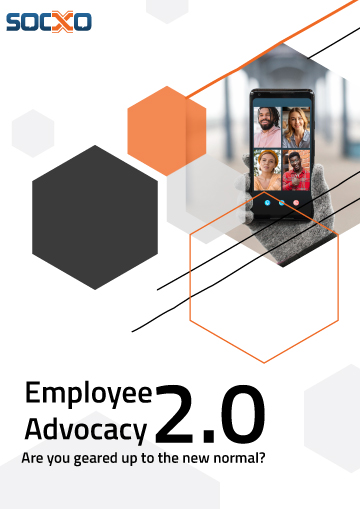
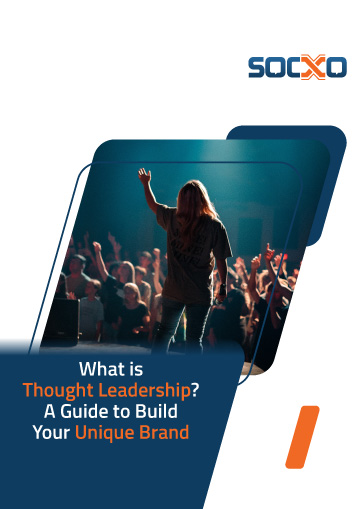



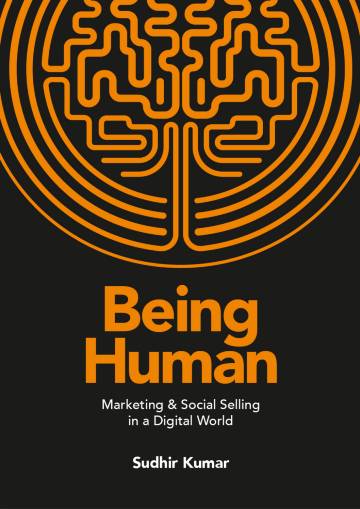
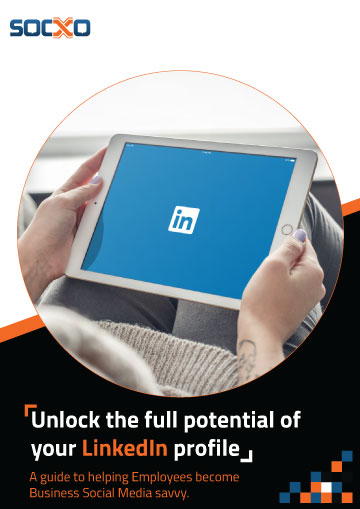


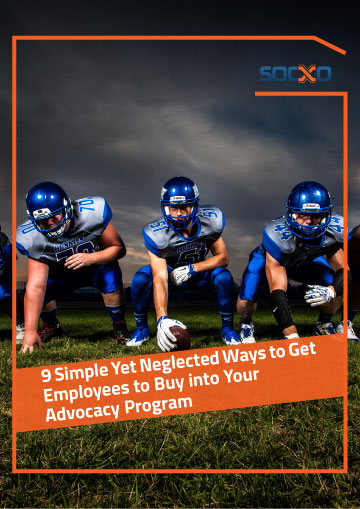




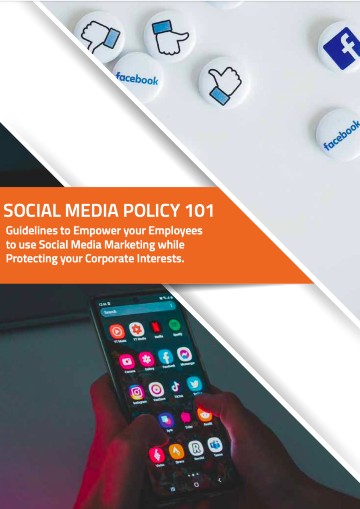
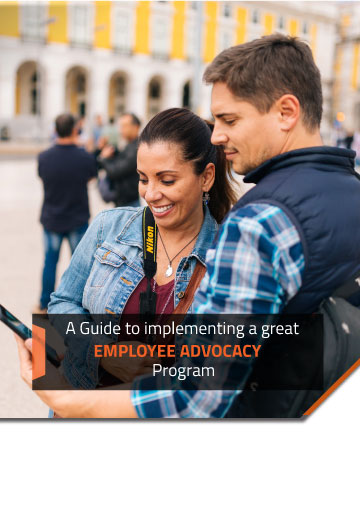
Blog Comments
AN
December 9, 2019 at 8:17 am
A comprehensive post on Employee Advocacy. Good read and educational.
Business Growth through Brand Advocacy.
January 15, 2020 at 4:23 am
[…] why Employee Engagement comes first before Advocacy. Or this post which is perhaps the most comprehensive guide to employee advocacy. Go ahead and check them […]
Growth Hacking | External advocates | Socxo
March 26, 2020 at 8:22 am
[…] why Employee Engagement comes first before Advocacy. Or this post which is perhaps the most comprehensive guide to employee advocacy. Go ahead and check them […]
Employee Advocacy Program For Organic Reach Growth | Socxo
February 24, 2021 at 12:45 pm
[…] Is there a way to smoothly and successfully implement an employee advocacy program? What all should you remember before you kickstart an advocacy program? And, is advocate marketing really that important for business? […]
Why You Should Not Confuse Audience Size With Influence - Brand Advocacy Solutions. Employee Advocacy. Customer Advocacy, Partner Advocacy.
February 24, 2021 at 12:48 pm
[…] Employee advocacy is not for everybody and not for every employee. Look for people who are enthusiastic. Lots of people love their companies. Whenever they discover that they have an opportunity to help people in marketing, they just love the idea. They love that they can somehow get out of their normal routine and try something different and help the company in some way. So, enthusiasm is the most important quality to look for when starting an employee advocacy program. […]
Advocacy Program Strategies | Socxo Tips
February 24, 2021 at 12:50 pm
[…] Employee advocacy program is on the lips and task list of every CXO today. But is your organization ready for it? Will your workforce naturally advocate you on social media? On AdvocacyCAST, our bi-weekly podcasts featuring the bright minds in brand advocacy, Neal Schaffer lists down the essentials to get the employees bat for the company on social media. […]
Three Best Steps To Drive Employee Advocacy In An Organization - Brand Advocacy Solutions. Employee Advocacy. Customer Advocacy, Partner Advocacy.
February 24, 2021 at 12:50 pm
[…] Pollitt. A combination of gifting, fun contests and praise could be the magic formula to keep the workforce enthused about employee advocacy. In a tête-à-tête with Rodger Johnson, he further talks about the three trends in social media, […]
Three unmissable marketing tactics on Social media | SoCXO
February 24, 2021 at 12:51 pm
[…] third trend is advocacy. Employee advocacy, client advocacy – all these different groups that are connected to your brand in some way. […]
Know Why Should An Organization Use Socxo | Best Social Employee Advocacy Platform
February 24, 2021 at 12:54 pm
[…] TechnoparkToday: Congrats Mukund. Now, SOCXO has become the leading all-in-one employee advocacy platform in India. […]
Grow Business Using Advocacy Marketing Program | Socxo
February 24, 2021 at 12:59 pm
[…] effective employee advocacy program requires proper planning and implementation to reap these key benefits. Talk to us at SOCXO and […]
Employee Advocacy Marketing Platform | Socxo
February 24, 2021 at 1:00 pm
[…] to learn and adapt ASAP. With this in mind, SOCXO looks at trends and examines how Advocacy, and Employee advocacy in particular, is proving to be the future of […]